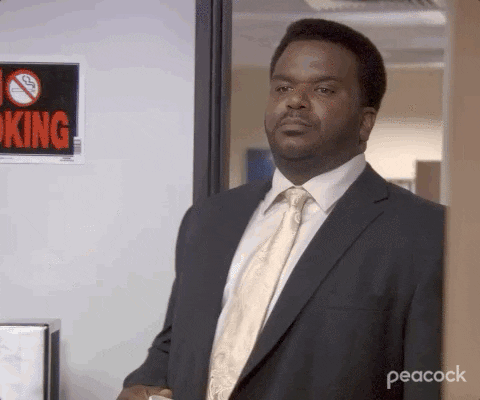- The Ladder
- Posts
- The Top Secret Top Four
The Top Secret Top Four
🧠 Lesser-Known Biases to Select, Seduce and Sell 🤐

👋 Hello and welcome to our 10th edition of The Ladder! 🥳
I’m incredibly humbled to be in your inbox on a weekly basis, and take nothing for granted. I’m truly enjoying the process and hope you’re enjoying the read as well.
I’ve been getting a few questions coming in lately through LinkedIn so wanted to bring it to the welcome note - Each week I'm here to answer any question you might have in the space of marketing, strategy, leadership, digital and everything in between.
Just hit 'reply' and let me know what's on your mind, and I'll share my answer with the community here the very next week, including a special shout out (if you're into that, otherwise we can keep it anon) 🥸
If you missed last week’s edition you can catch-up ⏪️ here
It’s strictly all killer, no filler this week as I’m up to my eyeballs in conference action, so no links, LOL’s or news. I do hope you enjoy a deep-dive into four of my favourite, and lesser-known biases, and how you can put them straight into action tomorrow.
Until next week…
Might as well face it you’re addicted to love,


If you were sent The Ladder by some legend, click below to subscribe.
⏱️ ~ 8 minutes 21 seconds read
While you eat your cereal, walk your dog, scroll the news, heck even whilst you’re occupying the most private of private rooms - you’re being marketed to. Persuasion is all around us, in the messages we receive, content we consume, and especially in the products that we use and that use us (for our attention).
Today, the subtle yet powerful wand of behavioural science is waved by almost all practising marketers to nudge, tilt, and sometimes shove us towards making decisions.

You will pay your taxes
Behavioural nudges are now mainstream - Governments are now using these tools to encourage everything from healthier living to paying taxes on time.
Many of these biases you’ll be familiar with:
Social Proof
Scarcity
Availability Heuristic
But that’s the basics - Today, I wanted to share with you four of some of the most powerful, but lesser-known biases that for me, are take-to-the-bank ready for you to implement into your marketing and business immediately.
THE SHHHH FOUR 🤫
You’ve probably read Robert Cialdini's “Persuasion”, if you haven’t, it 100% should be on your reading list (there’s a reason it’s a best seller). But there are loads of under-the-radar cognitive biases that are equally, if not more powerful, simply due to the fact that many people are simply not aware of them.
⚠️ DO NO EVIL WARNING ⚠️
Kinda feels like we shouldn’t have to say this, but the following are powerful weaknesses and vulnerabilities that can be exploited in people.
If you’re planning to use these to dupe people, sell anything harmful (ie. that you would not sell to your own mother) or that results in harm to the world generally: stop now.
You can unsubscribe right now - it’s cool, I won’t be offended.

That’s cool, I’m out.
OK, now that that guy has left, let’s take a look at what I like to call our “Shhh Four” list of lesser-known, yet powerful biases:
🎶 The Eaton-Rosen Phenomenon
🎂 The Life Event Effect
😃 The Peak End Rule
📉 Reciprocity Decay
Extra points if you can find a way to integrate these all into your product, communications or experience.
1. THE EATON-ROSEN PHENOMENON 🎶
This cognitive bias illuminates a quirky quirk of human psychology: our tendency to perceive rhyming statements as more truthful or accurate, and more importantly, memorable than otherwise.
Consider the difference between “Once you start, you can’t stop” and "Once you pop, you can’t stop”
Despite conveying the same idea, one is a billion dollar idea, the other is scribbled on a sticky note that has fallen off a whiteboard and is being vacuumed up as we speak.
It’s not just the fact that the rhyme rolls off the tongue. It stays with the audience, is probably evoked when consuming the product, and somehow feels more profound or trustworthy.
Named after the researchers who brought it to light, this phenomenon showcases our brain's penchant for finding patterns and meaning in symmetry, even in the realm of language.
It's a testament to the power of poetic flair in persuasion and memory retention, highlighting why slogans, jingles, and maxims often come in neat, rhyming packages.
“Birds of a Feather Flock Conjointly”.
Just doesn’t have the same ring does it?
2. THE LIFE EVENT EFFECT 🎂
Imagine you've just hit one of life's big milestones—maybe you've turned the big 5-0, welcomed a little bundle of joy into your world, or finally put a ring on it 💍
According to the "Life Event Effect," it's during these pivotal moments that you're three times more likely to switch up your usual brand loyalties.
Why? Because these milestones often bring new needs or desires to the forefront, you’re willing to see yourself as the “new me” - making you more open to exploring different solutions that align with your new life chapter.
Yes, perhaps competitive boxing at age 50 is just the thing 🥊
This is why a change of address is such coveted data (hello Data Aggregators 👋) when it comes to consumer targeting.
It’s a strong signal that you’re likely within a significant life event, and are now more open to switching all sorts of services and otherwise deeply habitual products.
3. THE PEAK-END RULE 😀
Have you ever heard of the White Castle hotel in Los Angeles? If you have, chances are it’s because of an incredibly clever gimmick called the "Popsicle Hotline".
Whilst chilling poolside at this otherwise fairly unremarkable hotel, guests can pick up a dedicated phone to order free popsicles, immediately delivered poolside by hotel staff.
This unique feature creates a peak experience—unexpected, delightful, and intensely memorable.
It's not just about the free popsicle; it's the novelty and fun of the way it's delivered that sticks in guests' minds.
This clever touch is likely to be one of the most vivid memories guests take away from their stay (their tripadvisor reviews almost universally mention the Popsicle Hotline) - illustrating how a well-placed peak experience can elevate the overall perception of a service or brand, regardless of the minutiae of every interaction during their stay.

Wrong White Castle, right move tho’
The Popsicle Hotline doesn't just add a touch of whimsy; it strategically applies the Peak-End Rule to ensure guests leave with a standout memory, potentially overshadowing any less-than-perfect moments during their visit.
In addition to potentially washing over any less-than-perfect moments and leaving a lasting impression, the Popsicle Hotline also creates phenomenal word of mouth.
There’s not a human being alive, who isn’t sharing that experience with their co-worker back at the office the following week.
4. RECIPROCITY DECAY 📉
You likely know about the simple (and fundamental) bias of reciprocity: humans feel a powerful compulsion to reciprocate favours or kindness.
This is why those cheeky scammers in Rome put a rose in your hand or beads around your neck before you can even say “back off champ!”.
You want to give it back (but of course he won’t take it back). You aren’t comfortable just throwing it on the ground (reciprocity won’t allow you) - and so you buy it.
This is a particularly aggressive exploitation of reciprocity bias.
And a helluva way to sell a fragile and raggedy piece of landfill 🌹🗑️
Reciprocity is also well deployed in the B2B space with “Free Audits” and the like. The suited up version of handing out roses.
Or bizarrely, some B2B businesses still think this actually works with PDF reports and you exchanging your time in reciprocity. Ahuh 🙄.

But did you know there’s a natural decay in how long that compulsion lasts?
This decay is not just a matter of forgetfulness; it reflects a decrease in the emotional impact of the original act over time, reducing the perceived obligation to reciprocate.
This is why good product design includes asking for a review just after you’ve had a positive experience or received a bonus gift, or a retailer will ask you to come into store to collect your gift 🤭. Cheeky.
Given this decay, it’s incredibly important to remember to use that “goodwill” as quickly as possible - don’t delay to capitalise on the ask.
YOUR TO-DOS ✅
These four biases provide oodles of ways with which you can change up or reconsider aspects of your product marketing or experience.
Take a look at the below and see what might just work for you and your situation:
For The Eaton-Rosen Phenomenon
Creative Workshop: Organise a brainstorming session or even competition focused on developing catchy, rhyming slogans or taglines for your products or services. Encourage creativity and the use of poetic flair to make brand messages stick.
Content Review Meetings: Schedule regular meetings to review existing marketing materials and identify opportunities to incorporate rhyming phrases that enhance memorability and trustworthiness.
For The Life Event Effect
Customer Journey Mapping: Conduct workshops to map out customer life events that could lead to changes in product needs or brand preferences. Use this insight to tailor marketing campaigns to these specific life stages.
Data Analysis Initiative: Task a team with analyzing customer data to identify patterns or signals indicating life event changes, such as address updates, and use this information to trigger targeted marketing efforts.
For The Peak-End Rule
Experience Design Brainstorming: Host a session to brainstorm ideas for creating peak moments in the customer journey or product experience. Focus on both the peak and the end phases, ensuring they leave a lasting positive impression.
Customer Feedback Analysis: Implement a process for regularly gathering and analyzing customer feedback, specifically looking for mentions of peak experiences or final impressions. Use this feedback to refine the customer journey.
For Reciprocity Decay
Strategy Workshop: Lead a workshop to develop strategies that leverage the principle of reciprocity, ensuring that any gestures of goodwill or added value are closely followed by an ask or call to action, to capitalise on the window before reciprocity decay sets in.
Timing Optimization Project: Initiate a project to test and optimise the timing of asks following a positive experience or gift, using A/B testing to find the sweet spot that maximises response rates.
Plucking out just a couple of the above, and putting them to work over the next few weeks could produce game-changing results for your brand.
Which of the above seems pretty easy to get started with?
Have you seen other brands putting these biases to work?
Hit reply, I’d love to hear your thoughts.
If you enjoyed this edition, please forward it to a friend who’s looking to level-up their marketing and product game - They’ll love you for it (and I will too) ⏭️💌

Reply